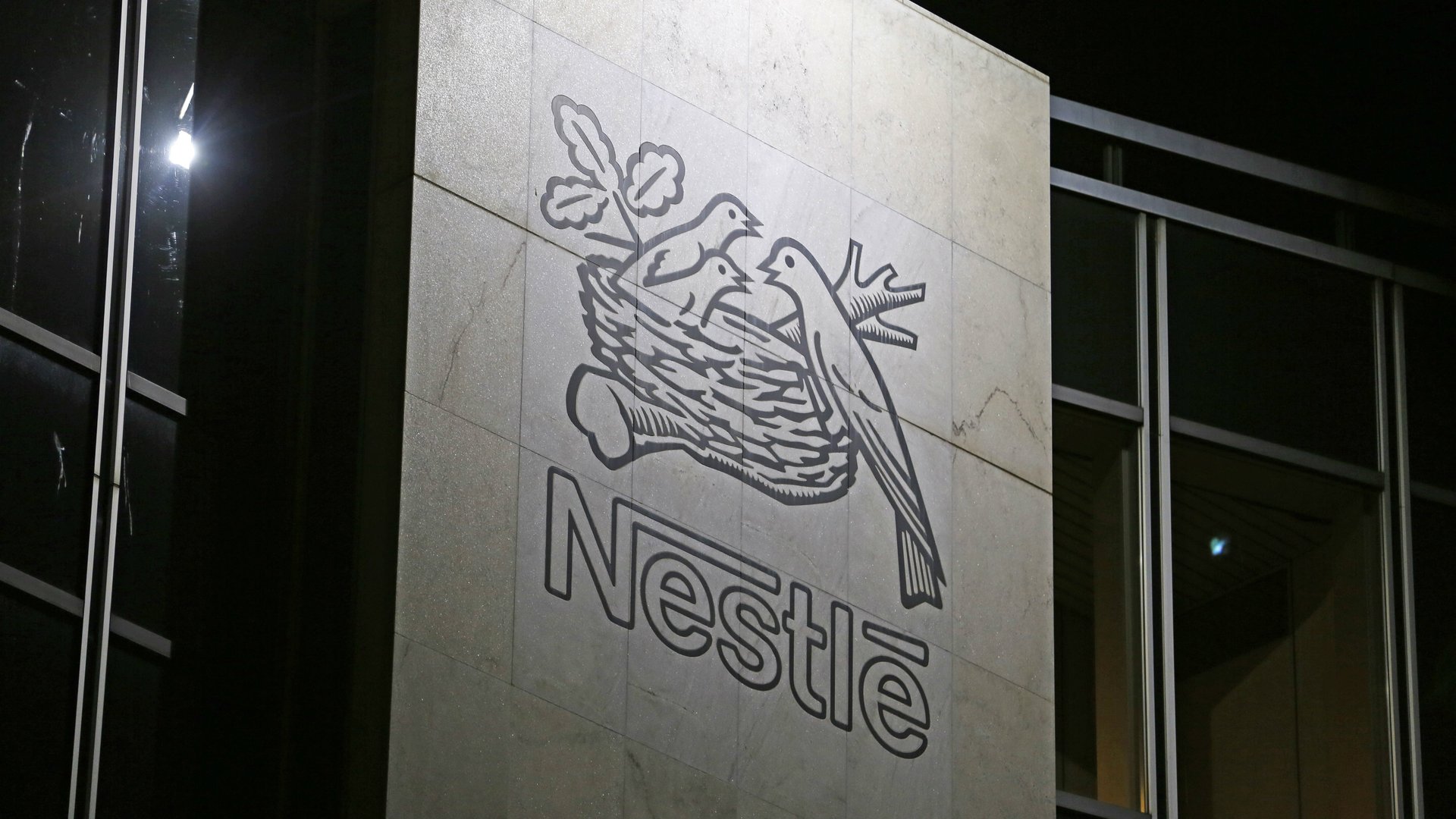Nestlé’s effort to rebuild public trust in its food starts with pizza smoothies
Dublin, Ohio


Dublin, Ohio
To confirm a batch of frozen pizzas is safe for the public to eat, a single pie must first be transformed into a frothy smoothie.
Scientists at Nestlé’s food safety laboratory here in the center of Ohio, just northwest of Columbus, are doing just that, sticking pizzas and other Nestlé products and ingredients into industrial-grade blenders. That’s where they are broken down and prepared to be sent deeper into the laboratory to be tested for heavy metals, pathogens, pesticides, and other contaminants.
Nestlé, which is the world’s largest food company, recently finished a $31 million expansion to its Dublin facility, adding a 32,000 square-foot microbial testing lab and an upgrade to its chemistry lab. The company is officially unveiling the new lab today (Aug. 10), an event noteworthy enough in this state that it is attracting former White House hopeful and Ohio governor John Kasich, who is scheduled to visit the lab this afternoon.
But perhaps more importantly, the lab is a key part of a broad effort by the company to buttress public trust in its products and the larger food system, which has slowly eroded following a steady stream of industry recalls and foodborne illness outbreaks, company officials say.
More than three-quarters of consumers in the US say they are concerned about food safety, according to a June 2016 Harris Poll. That’s not surprising, at least three big-name companies—Blue Bell Creameries, Chipotle Mexican Grill, and General Mills—have issued major recalls in the last two years.
And Nestlé is no stranger to recalls. Its India subsidiary had to remove its Maggi noodles from the shelves for part of last year after a government laboratory reported that samples of the instant noodles contained lead and higher than permissible levels of monosodium glutamate, or MSG.
Nestlé in 2009 recalled its Toll House refrigerated cookie dough from the US market after 66 people fell ill with E. coli across 28 states. People were eating the dough raw, and Nestlé critics said the on-package warning that read, “Bake before consuming,” didn’t warn consumers (paywall) clearly enough of the dangers.
The incident startled top managers at the company’s headquarters in Vevey, Switzerland—and set off a company restructuring that shifted investment into food safety.
“I think it was a shockwave for our industry as a whole,” said Greg Pritchard, who oversees quality management for Nestlé US . “Perhaps more for our raw materials suppliers. We were more vulnerable than we thought we were.”
Internally, the facility in Dublin is referred to as a “lighthouse,” one of the company’s food safety hubs for its vast network of suppliers and food processing plants up and down the the supply chain. There are 25 such labs scattered across the globe, but the one in Dublin is by far the largest and the most technologically sophisticated. Every product line sold in the Western Hemisphere gets tested in the Dublin lab for safety—the soil that grows Nestlé pumpkin seeds, the pepperoni on its pizzas, and the Mexican cocoa butter that winds up in its many products.
On an average day, about 220 people maneuver throughout the facility. Most of them are in white lab coats, poring over petri dishes, vials, and high-tech gadgetry. By the time one of those pizza smoothies reaches some of the testing machines, its essence has been extracted and diluted into clear liquid form. Next, it will find its way to multiple stations within the lab, where vials will be inserted into machines (some of them worth as much as $500,000 apiece) like the “GenoGrinder” to cross-check against potential dangers.
If something harmful is discovered, the company is prepared to halt the product’s path to retailers until it can figure out the source of the problem.
As lab director Aaron Ayres described it, Nestlé’s food safety ethos shifted following the 2009 cookie dough outbreak. Since then, it has evolved into a system in which compliance with food-safety regulations is no longer synonymous with meeting quality standards. Compliance means a company isn’t breaking the law, he said, whereas pursuing quality means making an extra effort to also meet consumer expectations.
It’s a big reach, even for a big company. And it’s a critical test for the multinational food companies looking to regain trust.